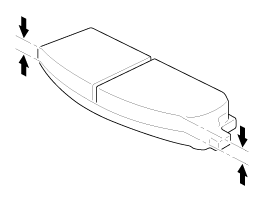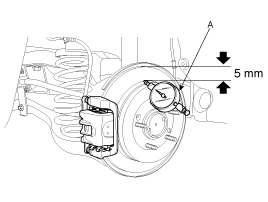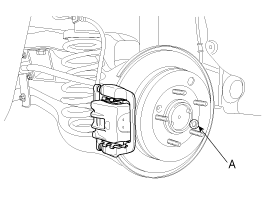If wear exceeds the limit, replace the discs and pad assembly for left and right of the vehicle.

Remove all rust and contamination from the disc surface, and then measure the disc thickness at 8 points, al least, of the same distance (5 mm(0.12 in)) from the brake disk outer circle.
Rear brake disc thickness
Standard value : 10.0 mm (0.39 in)
Limit : 8.0 mm (0.31 in)
Thickness variation should not exceed 0.01 mm(0.0004 in) (circumference) and 0.01 mm(0.0004 in) (radius) at any directions.
If wear exceeds the limit, replace the discs and pad assembly for left and right of the vehicle.

Check the pad wear. Measure the pad thickness and replace it, if it is less than the specified value.
Pad thickness
Standard value :
15.0 mm ( 0.59 in)
Service limit : 2.0 mm (0.08 in)

Check that grease is applied, and the pad and backing metal for damage.
Place a dial gauge about 5 mm (0.2 in) from the outer circumference of the brake disc, and measure the run out of the disc.
Brake disc run out
Limit : 0.05 mm (0.002 in) or less (new one)

If the run out of the brake disc exceeds the limit specification, replace the disc, and then measure the run out again.
If the run out does not exceed the limit specification, install the brake disc after turning it 180° and then check the run out of the brake disc again.
If the run out cannot be corrected by changing the position of the brake disc, replace the brake disc.
Remove the brake disc from hub using an M8 screw(A) if the brake disc has been seized with the hub due to corrosion or overheating.
Be careful not to use a hammer. The disc can be damaged if you remove the disc from the hub by hammering.
